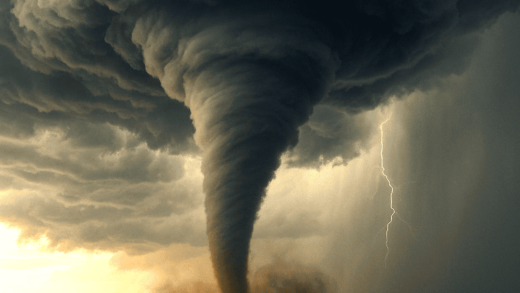Explore the diverse wildlife of Africa, including unique traits and behaviors that set these animals apart from others globally. Understand the importance of conservation efforts and how individuals can get involved in protecting these remarkable species.
Unique Animals of Africa
African wildlife is incredibly diverse and unique, showcasing an array of fascinating creatures. From the majestic lion roaming the savannah to the elusive okapi hidden in the dense rainforests, Africa is home to some of the world’s most remarkable animals. These unique animals of Africa exhibit distinct habitats and characteristics that set them apart.
- Lions: Known as the “king of the jungle,” lions thrive in social groups called prides, primarily found in savannahs.
- Okapis: Often called “forest giraffes,” these creatures are native to the Ituri Rainforest and are known for their striking stripes.
- Elephants: The largest land mammals, African elephants are known for their intelligence and complex social structures.
- Giraffes: With their long necks, giraffes are uniquely adapted to reach high foliage, making them a symbol of African wildlife.
Understanding what makes African wildlife special involves recognizing their adaptations and roles in their ecosystems. These animals not only contribute to the biodiversity of the continent but also play critical roles in maintaining ecological balance.
Interesting Facts about African Animals
African animals are full of surprises. Here are some intriguing facts that highlight their uniqueness:
- Communication: Did you know elephants can communicate through vibrations? They send signals through the ground that other elephants can pick up.
- Camouflage: The chameleon, a fascinating African reptile, can change its color to blend into its surroundings, aiding in both hunting and avoiding predators.
- Migration: The Great Migration of wildebeests and zebras is one of the most spectacular wildlife events, as thousands travel across the Serengeti in search of food and water.
These interesting facts about African animals not only amaze but also encourage learning and sharing information about their survival and behavior.
Pictures of African Animals
Finding stunning images of African wildlife is easier than ever, thanks to various resources available online. Websites like National Geographic and African Wildlife Foundation offer breathtaking photography that captures the essence of these animals in their natural habitats.
- National Geographic: A reputable source for high-quality wildlife photography and articles.
- Wildlife Conservation Society: Offers a gallery of images showcasing endangered species and conservation efforts.
- Instagram: Following wildlife photographers can provide a daily dose of stunning African wildlife images.
By exploring these sources, individuals can locate visual content for inspiration or educational purposes, enriching their understanding of African wildlife.
Adaptations of African Animals
African wildlife showcases remarkable adaptations that allow these unique animals to thrive in diverse environments. From arid deserts to lush jungles, the adaptations of African animals are nothing short of extraordinary. For instance, the fennec fox, native to the Sahara Desert, possesses large ears that dissipate heat, helping it survive in extreme temperatures. Similarly, the African grey parrot has a strong beak to crack tough nuts and seeds found in its rainforest habitat.
- Camouflage: The chameleon is a master of disguise, changing its color to blend in with surroundings, which aids in hunting and evading predators.
- Migration: The Great Migration showcases the survival strategy of wildebeests and zebras as they travel thousands of miles for food and water.
- Social Structures: Elephants form complex social groups, exhibiting emotional connections and cooperation, which enhances their survival in challenging environments.
These adaptations not only highlight the resilience of African wildlife but also underscore their crucial roles within ecosystems. Each adaptation contributes to the balance of the habitat, ensuring that species coexist and thrive.
Importance of African Wildlife
The significance of African wildlife extends beyond mere fascination; these creatures play vital roles in maintaining ecological health. African wildlife contributes to biodiversity, which is essential for ecosystem stability. For instance, predators like lions help control herbivore populations, preventing overgrazing and promoting vegetation growth.
- Ecological Balance: Each species interacts within its environment, creating a web of life that sustains various forms of life.
- Cultural Significance: Wildlife holds cultural importance for many African communities, symbolizing heritage and identity.
- Economic Value: Ecotourism centered around wildlife observation supports local economies and promotes conservation efforts.
Understanding the importance of African wildlife encourages a sense of responsibility towards their preservation. Protecting these species not only safeguards their existence but also ensures the health of the planet.
Endangered Species in Africa
African wildlife faces numerous threats, leading to a growing list of endangered species. Poaching, habitat loss, and climate change are significant challenges that put various animals at risk. For example, the African elephant is critically endangered due to illegal ivory trade, while the black rhino is facing similar threats.
- Critical Species: Some of the most endangered species include the mountain gorilla, African wild dog, and the pangolin.
- Conservation Efforts: Organizations like the World Wildlife Fund and African Wildlife Foundation work tirelessly to protect these species through anti-poaching initiatives and habitat restoration.
- Public Awareness: Raising awareness about the challenges these species face is crucial. Individuals can contribute by supporting wildlife organizations or participating in conservation activities.
By highlighting endangered species in Africa, we can foster a greater understanding of conservation challenges and inspire collective efforts to protect these remarkable animals.
Unique Traits of African Wildlife
African wildlife stands out not only for its diversity but also for its unique traits and behaviors that distinguish it from animals on other continents. One major aspect is the size and social structure of many species. For example, African elephants are the largest land mammals and exhibit strong social bonds within their herds, unlike elephants found in other parts of the world.
- Adaptations to Environment: Many African animals have evolved to thrive in specific habitats, such as the desert-adapted fennec fox and the savannah-dwelling cheetah, which is renowned for its speed.
- Unique Behavior: The migratory patterns of animals like wildebeests are unparalleled, showcasing a remarkable survival strategy as they traverse vast distances in search of food and water.
- Specialized Diets: Animals like the giraffe have adapted long necks to reach high foliage, while others, like the meerkat, have developed foraging techniques that reflect their social dynamics.
These unique traits not only enhance the survival of African wildlife but also contribute to the ecological balance of their environments, making them distinct from species elsewhere.
Getting Involved in African Wildlife Conservation
Learning about African wildlife conservation is essential for anyone interested in protecting these magnificent creatures. Numerous organizations and resources are dedicated to this cause. The World Wildlife Fund (WWF) and African Wildlife Foundation (AWF) are at the forefront, working on various initiatives to combat poaching, habitat loss, and climate change.
- Volunteer Opportunities: Many organizations offer volunteer programs where individuals can participate in conservation efforts directly, from wildlife monitoring to community education.
- Fundraising and Donations: Supporting these organizations through donations helps fund critical conservation projects, providing necessary resources for protecting endangered species.
- Awareness Campaigns: Engaging in or promoting awareness campaigns can help inform others about the importance of conservation and the steps that can be taken to help.
By getting involved in African wildlife conservation, individuals can contribute to the protection of these unique animals and their habitats, ensuring they continue to thrive for generations to come.





Comments are closed.